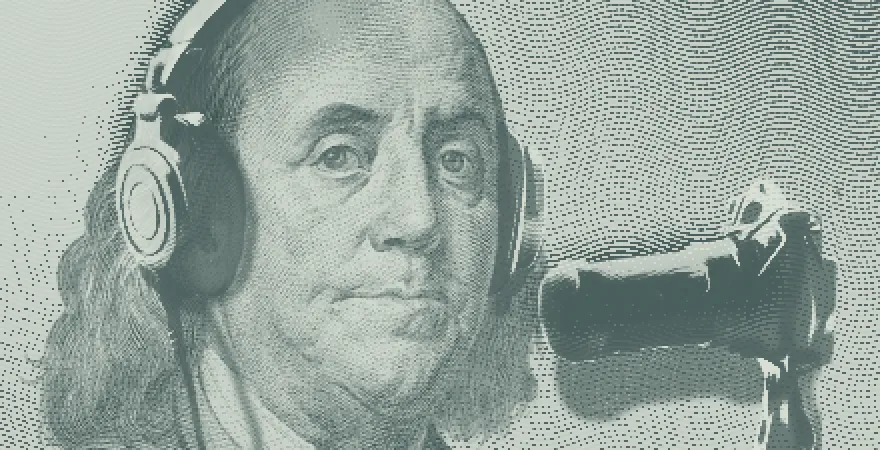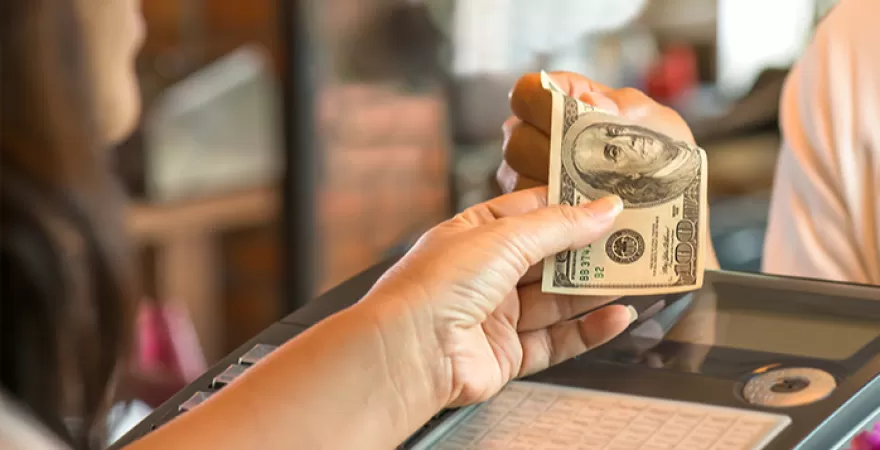[INTRO MUSIC PLAYS]
HOWARD: Hello and welcome to Noteworthy by the US U.S. Currency Education Program or CEP. My name is Howard Williams, and I'm the manager of the CEP. The CEP was responsible for ensuring the integrity of and trust in the US U.S. dollar by providing information and training resources to the public. Check out our website at uscurrency.gov to find free information and training resources on US U.S. currency. Leading our discussion today will be Maria Hawkins, who is joining us now.
MARIA: Hello, I'm Maria Hawkins, and I'm a member of the US U.S. Currency Education program. I support domestic and international outreach, and I'm joined today by Crystal, another CEP teamT member. Hey, Crystal, can you tell us a little bit about your role and introduce yourself to our audience?
CRYSTAL: Hey, Maria, thanks for inviting me to join. My name is Crystal Crosby, and I'm the Currency Education Program's Digital Project Manager, focusing on the website, uscurrency.gov and our mobile apps.
MARIA: Well, we're so happy to have you today. And Crystal and I are going to explain how anyone who handles cash can easily learn how to identify and authenticate bills and what steps to take if you suspect that you've received a counterfeit bill. So, at the Currency Education Program, we recommend a three-step approach to authenticate your cash. The first step is to feel the note, then tilt the note, and lastly to check it with light.
CRYSTAL: But wait, before we can learn how to authenticate money, we need to get to know cash a little bit better. Each bill has identifiers and symbols that provide specific information about each note, like where it was printed or when. Maria, do you have any cash on you? I've got a $10.00 bill right here.
MARIA: Yeah, I've got some right here.
CRYSTAL: Great. For those of you listening in, grab your wallet, your Piggy Bank, or searching your couch cushions, wherever you can find a little cash.
MARIA: Well, great. So, if you look closely, you'll see that every U.S. bank note has identifiers that are unique to every bill, including serial numbers, Federal Reserve indicators, note position letters and numbers, face- and back platebackplate numbers, and the series hereyear. So, let's dive into this a little bit more.
CRYSTAL: Great.
MARIA: Every note has a serial number, which is a combination of letters and numbers that appear twice on the front of the note.
The 1st letter of the serial number corresponds to the series year.
MARIA: So on the bill that I have here, I see that it starts with the letter L. This letter means that the note series year is 2009 A. The series year indicates either the year in which a new design was approved or the year in which a new secretary or treasure was incorporated into the design. Capital letters that follow the series year appear if there was a significant change in the appearance of the note.
CRYSTAL: MARIA: That's so interesting.
CRYSTAL: You know, you can also tell which of the 12 Federal Reserve Banks it was issued to, which position on a printing plate the note was printed, and the specific printing plates that were used to print each note just by looking at the face platefaceplate and the back platebackplate numbers. The faceplate number is found on the front of the note and the back platebackplate number is found on the reverse side.
MARIA: American currency is also designed with many symbols. The symbolism aims to evoke feelings of optimism and patriotism. Some examples of these symbols include eEagles, pyramids, seals, and more. Again, check out uscurrency.gov to learn more about the numbers and symbols that are important parts of the design and security features that can be found on all US U.S. currency.
CRYSTAL: So now let's move on to our main topic of the day, how to authenticate your bills. You can do this by feeling the note, tilting the note, and checking the note with light. Remember, feel, tilt, check.
MARIA: So, let's start with the first step. Feel. Run your fingers across the bill. What do you notice? It should feel slightly rough in texture, and this is because of the special printing process and because real bills are composed of a special blend of cotton and linen.
CRYSTAL: The next way to authenticate a bill is to tilt it. So, when you tilt the note, you'll see that the ink in the numbers on the lower right corner changes from copper to green for denominations 10 or higher. And if you have a newer $100 bill, the inkwell symbol changes color, too. The $100 note also contains a blue 3D security ribbon. The ribbon is actually woven into the paper and not printed on it.
MARIA: It's truly amazing.
CRYSTAL: When you tilt the note back and forth, the bells within the ribbon change to hundreds and move from side to side. And when you tilt the note side to side, the bells move up and down.
MARIA: This is so cool to be able to play with these notes as we're talking.
CRYSTAL: Lastly, the 3rd way to authenticate your bill is to check. This means to check the bill with light. When you hold the note up to light, you'll see a security thread that's embedded vertically on denominations 5 and higher, and each denomination glows a different color when held up to UV light. You can also see a faint image to the right of the center portrait of denominations that are 5 or higher when they're held to light. So, this is the watermark. Watermarks are visible from the front and the back of the note.
CRYSTAL: And as a bonus, there's one other way to check . Tto see if you have a genuine note. Look for micro printing. To do this, look closely or use a magnifying lens on bills 5 or higher and look for the small print words on the face of the bill. They should look clear under magnification. See how many different places you can find it.
MARIA: Again, as a reminder, always feel, tilt and check. And now you know the three best ways to authenticate your money, plus the bonus feature that Crystal shared.
CRYSTAL: But wait, Maria, what do you do if you suspect that you've received a counterfeit?
MARIA: No, that's a really great question.
CRYSTAL: If this is a part of your job, become familiar with your organization's reporting procedures. This may include notifying your manager, contacting local law enforcement, or even reaching out to a Secret Service office. If you received a bill personally, contact your local Police Department or the nearest US U.S. Secret Service field office.
MARIA: We hope after this episode you have learned how to identify and authenticate your bills and what to do if you suspect that you've received a counterfeit bill. We really appreciate you, Crystal, for taking the time to meet with us and for sharing these insights. And Ffor more information about the topics that we discussed today, please visit uscurrency.gov, where you can access the show notes of today's recording and you can stay updated with future podcast episodes. Subscribe and connect with us on social media. Until next time.
[EXIT MUSIC PLAYS]



